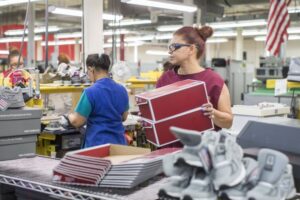What employers can learn from the essential workforce
Essential employees are fearful of contracting COVID-19 while at work, so why would nonessential workers consider returning to the office?
It’s a question that employers need to be addressing to ensure the safety of their workforce, according to a recent employer survey by Mercer. The pandemic has hit industries like retail and wholesale, manufacturing and healthcare the hardest, and 45% of employers with these essential workers are having trouble getting employees to show up for their shifts, according to the survey. Experts at Mercer anticipate employers with nonessential workers will likely experience the same issues once shelter-in-place orders are lifted, and are advised to consider how they’ll deal with these trepidations.
“The fact that so many employers have reported issues with employees not coming to worksites due to fear of becoming ill underscores that the first priority is to develop a comprehensive plan to keep employees safe at work,” says Dr. David Zieg, Mercer’s clinical services leader. “The second priority is to clearly communicate this plan to employees so as to allay their fears.”
Essential workers are instructed to maintain distance between their coworkers and customers to help quell the spread of the virus, but 30% of respondents say it’s a difficult policy to implement and have been providing workers with masks to wear during their shifts. Employers of nonessential workers plan to follow suit; 63% say their company will provide workers with masks once everyone is allowed to return to the office. However, that policy may also prove difficult to uphold; 37% of employers with essential workers reported they had trouble finding enough masks to buy for their employees.
“To be an effective strategy, everyone in a worksite needs to wear a mask to ensure that any person carrying the virus without being aware of it is wearing one. That’s why it’s concerning that employers report difficulties in purchasing masks for their essential workers,” Dr. Zieg says.
Mask shortages are particularly dire for healthcare workers, who are often in direct contact with people infected by COVID-19. Zieg urges workers of other industries to consider making their own masks to ensure healthcare workers have the protection they need.
“Employers should understand that general-use facemasks that improve respiratory hygiene do not need to be surgical masks or N-95 masks; those should be reserved for healthcare workers,” Dr. Zieg says. “The CDC has noted cotton masks can be used for this purpose.”
Employers with nonessential workers reported plans to enforce a “staggered” return to the office — having only a portion of workers come in on certain days — to help with social distancing. Mercer experts suggested in the report that employers may continue allowing employees to work from home, since many might not feel comfortable commuting to the office.
Tech companies like Facebook and Google have announced that their staffs can work remotely through the end of the year, with Twitter announcing that all full-time employees can work from home forever. However, just 8% of surveyed employers told Mercer they’ll continue to embrace remote work as social distancing orders are lifted.
It’s critical employers are aware of their employees’ wellbeing while considering return-to-work plans, Mercer experts say.
“History has shown that during a crisis, employers that put their people first and interact with them empathetically emerge with a much stronger and engaged workforce,” says Susan Haberman, senior partner and U.S. career leader for Mercer. “For many employers, leading with empathy will mean accepting that not all employees will be ready to return to the worksite once it opens. They should communicate to employees the steps they have taken to ensure their safety, but also acknowledge their apprehension, whether it is about safety, family obligations or other legitimate concerns.”

